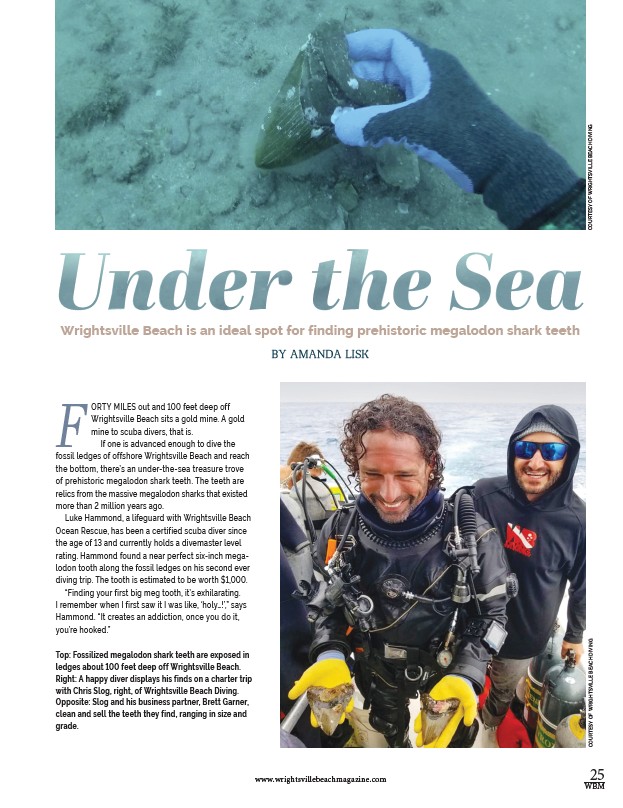
COURTESY OF WRIGHTSVILLE BEACH DIVING
Under the Sea
Wrightsville Beach is an ideal spot for finding prehistoric megalodon shark teeth
www.wrightsvillebeachmagazine.com 25
WBM
FORTY MILES out and 100 feet deep off
Wrightsville Beach sits a gold mine. A gold
mine to scuba divers, that is.
If one is advanced enough to dive the
fossil ledges of offshore Wrightsville Beach and reach
the bottom, there’s an under-the-sea treasure trove
of prehistoric megalodon shark teeth. The teeth are
relics from the massive megalodon sharks that existed
more than 2 million years ago.
Luke Hammond, a lifeguard with Wrightsville Beach
Ocean Rescue, has been a certified scuba diver since
the age of 13 and currently holds a divemaster level
rating. Hammond found a near perfect six-inch mega-lodon
tooth along the fossil ledges on his second ever
diving trip. The tooth is estimated to be worth $1,000.
“Finding your first big meg tooth, it’s exhilarating.
I remember when I first saw it I was like, ‘holy…!’,” says
Hammond. “It creates an addiction, once you do it,
you’re hooked.”
Top: Fossilized megalodon shark teeth are exposed in
ledges about 100 feet deep off Wrightsville Beach.
Right: A happy diver displays his finds on a charter trip
with Chris Slog, right, of Wrightsville Beach Diving.
Opposite: Slog and his business partner, Brett Garner,
clean and sell the teeth they find, ranging in size and
grade.
BY AMANDA LISK
COURTESY OF WRIGHTSVILLE BEACH DIVING